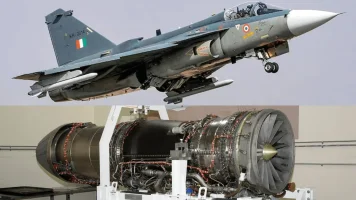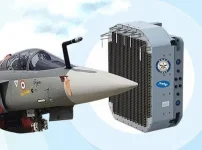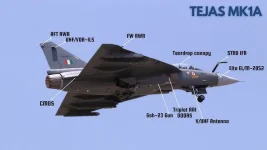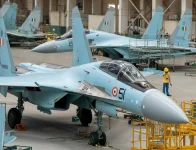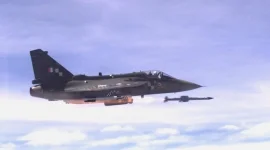- Views: 4K
- Replies: 20
The head of India's Defence Research and Development Organisation (DRDO) has provided a significant clarification on the future of the Tejas Mk1A fighter jet program, dismissing recent reports that all units of current order would be fitted with Israeli-made radars.
In a recent media interview, Dr. Samir V. Kamat, Chairman of DRDO, addressed the speculation surrounding the choice of radar for the advanced indigenous aircraft.
He confirmed that while initial batches will use a foreign system, the plan is to integrate the domestically developed 'Uttam' Active Electronically Scanned Array (AESA) radar starting from the 41st aircraft.
"No, I don’t think it’s true," Dr. Kamat stated, referring to claims that Hindustan Aeronautics Limited (HAL) would equip all 73 jets of the current order with the Israeli ELM-2052 AESA radar. "Discussions are still underway, and the plan is to integrate the Uttam AESA radar starting from the 41st Tejas Mk1A jet."
This statement reaffirms the nation's commitment to self-reliance in critical defence technologies, a cornerstone of the 'Aatmanirbhar Bharat' policy.
The radar system is one of the most vital components of a modern fighter jet, acting as its eyes and enabling it to detect, track, and engage multiple targets from long distances.
AESA radars represent the pinnacle of this technology, offering significant advantages over older mechanically scanned radars. By using a matrix of small, electronically controlled modules, AESA systems can scan vast areas of the sky almost instantaneously, track numerous threats simultaneously, and are more resistant to electronic jamming.
The Uttam AESA radar has been developed by DRDO's Bengaluru-based laboratory, the Electronics and Radar Development Establishment (LRDE). It is a state-of-the-art system capable of tracking over 50 targets at a range of more than 100 kilometres
Its successful integration into the Tejas fleet is seen as a crucial milestone for India's defence manufacturing ecosystem.
The first 40 Tejas Mk1A jets are expected to be fitted with the proven Israeli ELM-2052 radar to ensure that production timelines and delivery schedules to the Indian Air Force (IAF) are met without delay.
The Tejas Mk1A program is vital for the IAF, which is in the process of replacing its aging fleet of MiG-21 aircraft. In 2021, the Ministry of Defence signed a ₹48,000 crore deal with HAL for 83 Tejas Mk1A aircraft, which includes 73 fighters and 10 trainers.
An additional order for 97 more jets has also received initial approval, which will eventually take the total number of Mk1A jets in the IAF's inventory to 180.
Dr. Kamat's clarification highlights a pragmatic approach, balancing the immediate operational requirements of the Air Force with the long-term strategic objective of fostering indigenous defence capabilities and reducing dependency on foreign suppliers.

